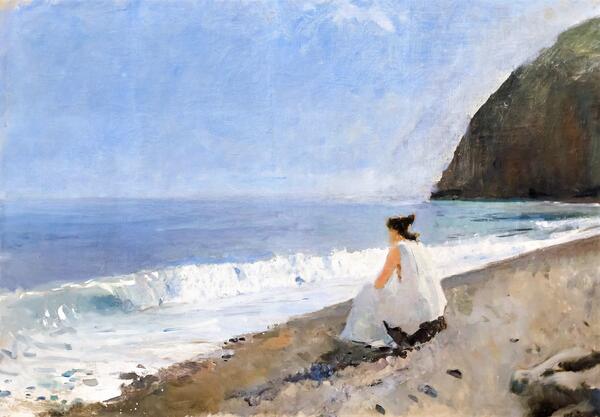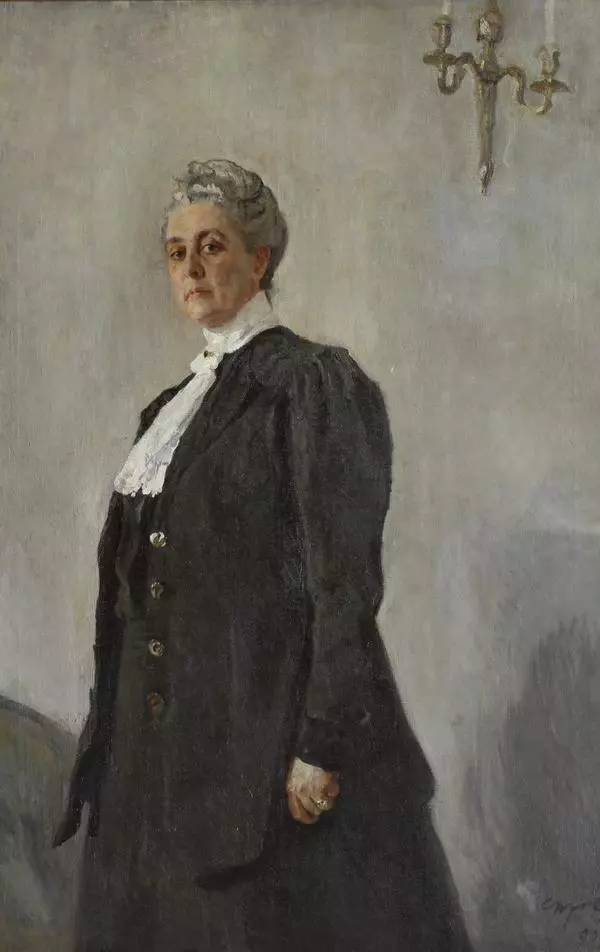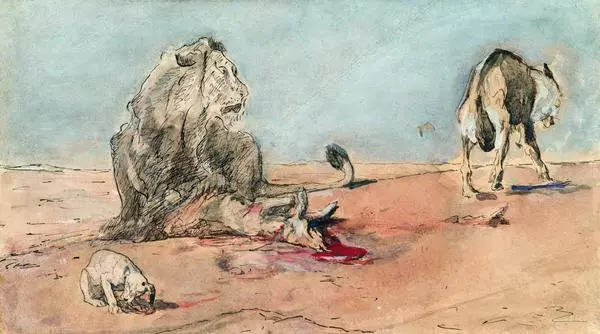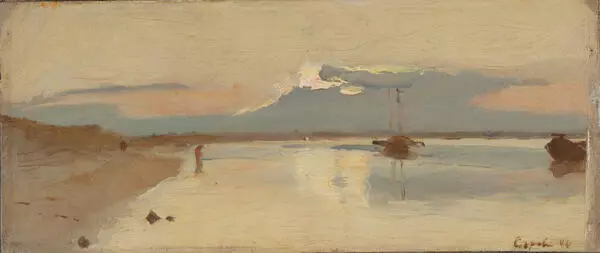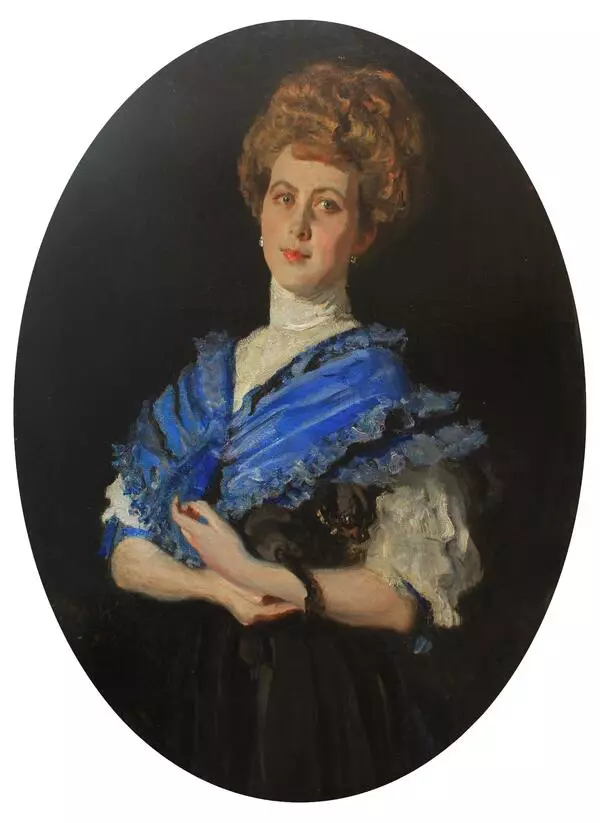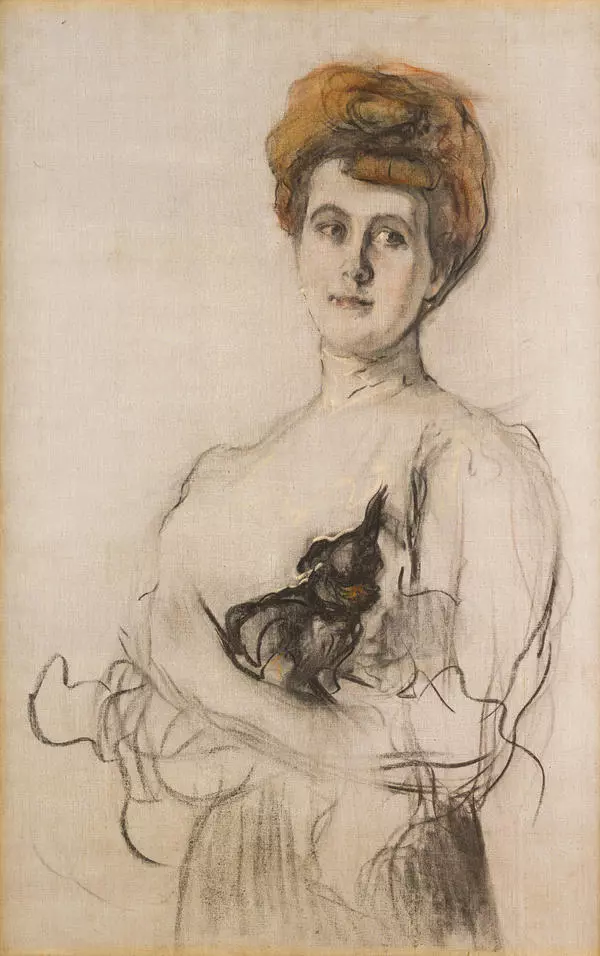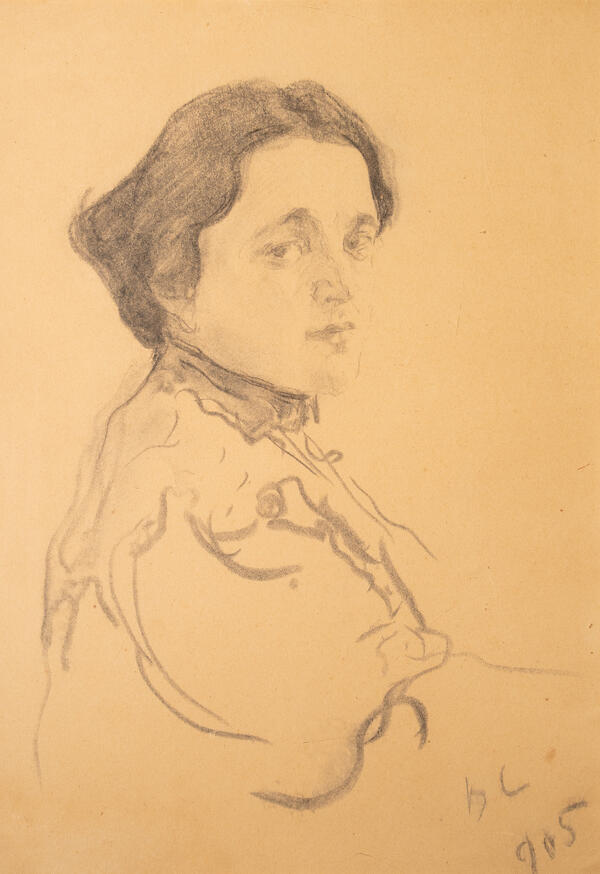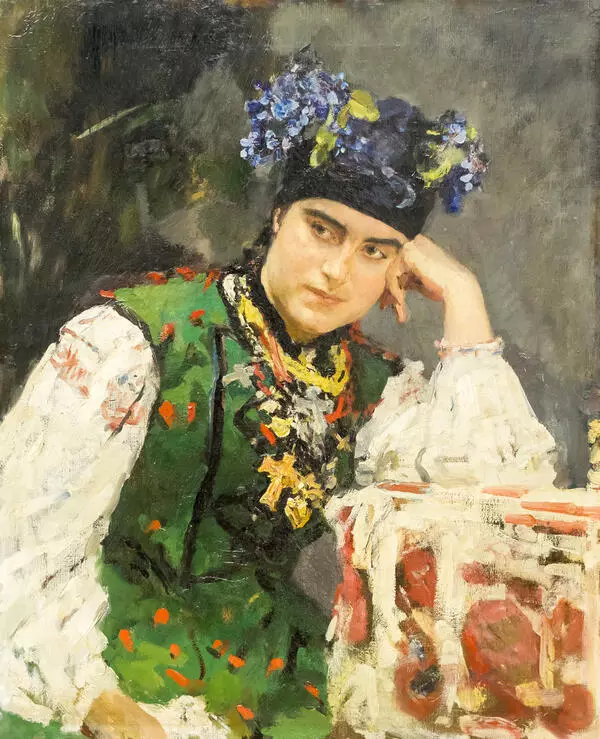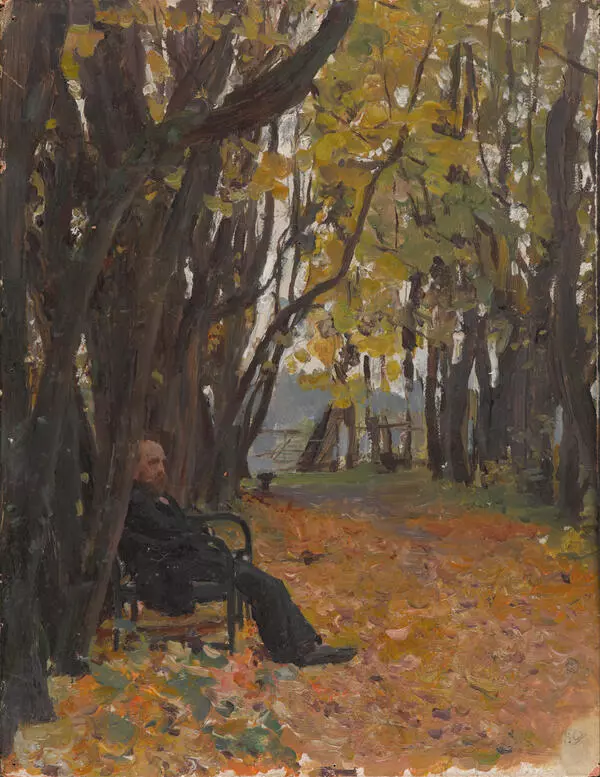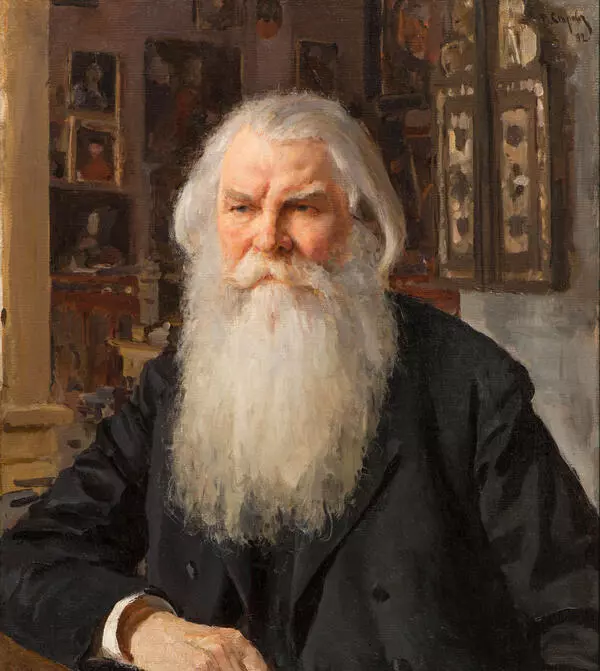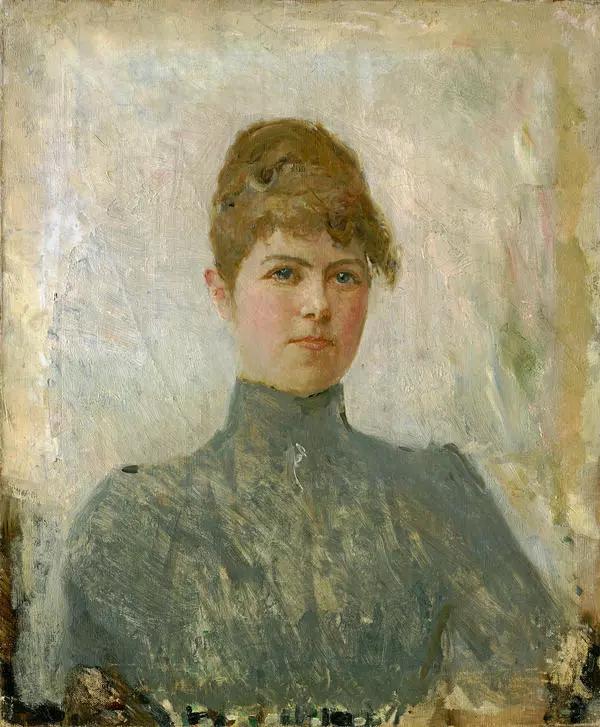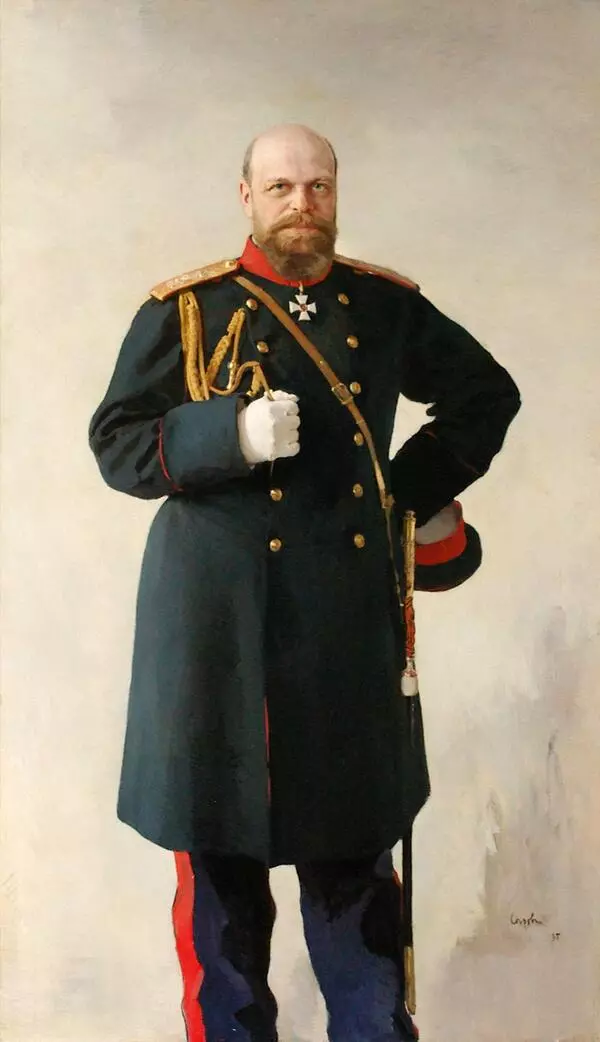Valentin Serov painted ‘Iphigenia in Tauris’ in the 1890s. It was conceived in Crimea, where Serov spent the summer and autumn of 1893. Together with his family, he settled not far from Bakhchisarai at the dacha of Rosalia Lvova, his relative. While there, the artist took to outdoor sketching.
In Crimea, Serov recalled an ancient story about Iphigenia, the plot of which was associated with those lands. There are different versions of this legend. According to one of them, the Greek king Agamemnon was forced to sacrifice his daughter Iphigenia to the goddess Artemis — with this sacrifice, his army hoped to defeat Troy. But at the last moment, when Iphigenia was already on the sacrificial altar, Artemis replaced her with a deer, and the girl was brought to Tauris (the ancient name for Crimea). There Iphigenia became a priestess at the temple of Artemis.
Valentin Serov approached the plot from an unconventional perspective. Instead of picturing the most dramatic scene with the sacrificial altar, he chose to reveal the depth of Iphigenia’s suffering. The desolate girl, betrayed by her father for the sake of politics, descends from the temple of Artemis to the sea. She looks extremely lonely. Having at first saved Iphigenia from death, Artemis has turned out to be even more cruel than the king: Iphigenia’s life is reduced to being a temple slave.
In Yalta, the artist drew several sketches of a woman in an ancient Roman tunic standing and sitting on the shore. Painting from life, Serov created a smooth combination of the landscape and the human figure: calm waves and a deserted coast emphasized Iphigenia’s loneliness.
In St. Petersburg and Moscow, Serov continued to work on the sketches, as well as on the painting itself. According to the artist, he was not particularly fond of it. He said that“it didn”t convey the spirit of the era”. The master restarted the painting several times, but never completed it.
Valentin Serov is considered one of the most important Russian painters at the turn of the 20th century. He is known as a brilliant portraitist and one of the first Russian artists whose works contained elements of Impressionism. He is most famous for his paintings “Girl with Peaches”, “Girl in the Sunlight” and the portraits of his famous contemporaries. For some time “Iphigenia in Tauris” was in the possession of the artist’s family. In 1926, it entered the Russian Museum in Leningrad, and was transferred to the Kazan collection in 1930.
In Crimea, Serov recalled an ancient story about Iphigenia, the plot of which was associated with those lands. There are different versions of this legend. According to one of them, the Greek king Agamemnon was forced to sacrifice his daughter Iphigenia to the goddess Artemis — with this sacrifice, his army hoped to defeat Troy. But at the last moment, when Iphigenia was already on the sacrificial altar, Artemis replaced her with a deer, and the girl was brought to Tauris (the ancient name for Crimea). There Iphigenia became a priestess at the temple of Artemis.
Valentin Serov approached the plot from an unconventional perspective. Instead of picturing the most dramatic scene with the sacrificial altar, he chose to reveal the depth of Iphigenia’s suffering. The desolate girl, betrayed by her father for the sake of politics, descends from the temple of Artemis to the sea. She looks extremely lonely. Having at first saved Iphigenia from death, Artemis has turned out to be even more cruel than the king: Iphigenia’s life is reduced to being a temple slave.
In Yalta, the artist drew several sketches of a woman in an ancient Roman tunic standing and sitting on the shore. Painting from life, Serov created a smooth combination of the landscape and the human figure: calm waves and a deserted coast emphasized Iphigenia’s loneliness.
In St. Petersburg and Moscow, Serov continued to work on the sketches, as well as on the painting itself. According to the artist, he was not particularly fond of it. He said that“it didn”t convey the spirit of the era”. The master restarted the painting several times, but never completed it.
Valentin Serov is considered one of the most important Russian painters at the turn of the 20th century. He is known as a brilliant portraitist and one of the first Russian artists whose works contained elements of Impressionism. He is most famous for his paintings “Girl with Peaches”, “Girl in the Sunlight” and the portraits of his famous contemporaries. For some time “Iphigenia in Tauris” was in the possession of the artist’s family. In 1926, it entered the Russian Museum in Leningrad, and was transferred to the Kazan collection in 1930.

